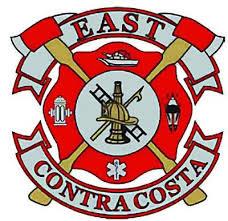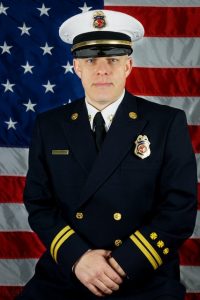Over the past year, the East Contra Costa Fire Protection District (ECCFPD) has worked on assuring that we are sustainable, operationally sound, and living within our means. Today, approximately one year into the District’s reorganization, we are beginning to see the fruits of our labor. We have been able to stabilize the District’s staff retention challenges and have started to define better administrative and operational processes. Although the District is not able to provide service levels that adequately protect the community’s residents at this time, we are well on our way to building a solid foundation from which service levels can be efficiently increased when the residents move to provide additional revenue.
While the District continues to stabilize and reinforce our foundation, we also will begin to prepare for growth. The District will start by investing in infrastructure (apparatus, equipment, and stations) in accordance with the District’s equipment and capital improvement plan. Historically (since 2002) the District has not adequately invested in its infrastructure, directing all available funds to attempt to retain a fourth fire station. Unfortunately, a fourth station is not sustainable with our current revenues, and deferred investment in the District’s infrastructure has created many challenges. District assets’ state-of-repair needs to be addressed to assure that ECCFPD is providing services as efficiently as possible now, and also preparing for future growth.
Indulge me for a moment as I explain why investing in infrastructure is vital for ECCFPD to be sustainable and to prepare for future growth.
Let’s start with our stations and how they relate to our service model.
 The District currently has three open stations and is running at capacity with three personnel per station, per shift, for a total of nine firefighters on duty at any given time. With this three-station model, it is impossible to provide a high level of service in terms of response times throughout the District. Our system is very dynamic, and its’ limited number of engines are frequently out of the stations on calls. Occasionally, none are available for a new call and service must come from outside the District, so one cannot assume that being close to a fire station assures a rapid response. That means that the best response times are available to those nearest to a District engine at the time of their call because any or all three of our engines may be out of their stations on calls in Marsh Creek / Morgan Territory, Bethel Island, Discovery Bay, Knightsen, Oakley, Byron and/or Brentwood.
The District currently has three open stations and is running at capacity with three personnel per station, per shift, for a total of nine firefighters on duty at any given time. With this three-station model, it is impossible to provide a high level of service in terms of response times throughout the District. Our system is very dynamic, and its’ limited number of engines are frequently out of the stations on calls. Occasionally, none are available for a new call and service must come from outside the District, so one cannot assume that being close to a fire station assures a rapid response. That means that the best response times are available to those nearest to a District engine at the time of their call because any or all three of our engines may be out of their stations on calls in Marsh Creek / Morgan Territory, Bethel Island, Discovery Bay, Knightsen, Oakley, Byron and/or Brentwood.
Now, imagine if the District were to receive additional revenue that would enable it to open six more stations, allowing it to achieve the recommendations in ECCFPD’s 2016 “Deployment Performance and Headquarters Staffing Adequacy Study” (https://eccfpd.specialdistrict.org/about-the-district). If the District had the budget, as the Fire Chief, I could quickly hire more firefighters. But the unfortunate reality is that the District does not have adequate stations, beyond the three that are currently staffed, to house additional firefighters 24 hours a day, seven days a week.
In addition to our three active stations, the District also has five shuttered stations, but none of them can be reopened without massive renovations – or, more likely, complete replacement. The shuttered stations were mostly constructed in the 1950’s and were never intended to operate full-time (24-hours a day, seven days a week). Instead, they were built for volunteer firefighters to gather and respond to emergencies, and to store equipment. For the past 15 years, the District has done everything it could to update the antiquated facilities in an attempt to turn them into livable stations that are suitable for full-time fire department operations. Unfortunately, we have taken them as far as we can, and each of the shuttered stations is at the end of its useful life. Today, these stations are used for storage or sit vacant; unless the buildings are rebuilt, they will never reopen as fire stations. The shuttered stations are in the process of being evaluated to allow the District to determine if the assets will become surplus and sold, or if the stations will be rebuilt. This assessment will be finalized as part of the District’s upcoming Strategic Planning process.
Based on the “Deployment Performance and Headquarters Staffing Adequacy Study”, the District should have four fire stations in Brentwood, three in Oakley, and two in Discovery Bay / Byron, and for the District to continue its contract with Cal Fire to operate the Marsh Creek Station (Sunshine Station). The station locations were identified based on population, growth, and access to main roads to ensure response times are the best possible. The priority and process for opening future stations will be finalized during the District’s upcoming Strategic Planning process. Meanwhile, the District is already working with the cities of Brentwood and Oakley to build new stations now to prepare for future growth.
Second, let’s look at fire-fighting equipment. In addition to having an inadequate number of stations and crews, the District’s equipment is outdated, breaking down, and no longer meets National Fire Service recommended operational standards. Like the stations, during the economic downturn maintenance and replacement of fire engines and equipment was deferred. At this point, the District’s deferred maintenance and replacement practices have caught up with us and are impacting our service.
The District’s three front-line (“first-out”) engines are more than 10 years old and have racked up more than 100,000 miles of service. The fire service industry standards are to transition first-out fire engines to reserve status at either 10 years or 100,000 miles. In addition, most of the equipment on our engines is from 2001 and needs replacing. For example, the District is currently preparing and submitting grants to replace and update the District’s 17-year-old vehicle extrication equipment (“jaws of life”). If received, the grants will allow the District to replace this essential equipment on all three first-out engines, updating the mechanics from the old-fashioned hydraulic hoses hooked up to heavy equipment to modern battery-operated equipment, which is much lighter and faster to operate during rescue situations. The District also is on the look-out for grant opportunities to fund many other types of equipment replacement.
ECCFPD’s current service capacity is not acceptable in the near-term, and is no recipe for long-term success. This is why ECCFPD is in the beginning phases of creating a Strategic Plan that will define the path and cost to meet the response and staffing levels defined by the 2016 Deployment and Staffing Study. As the Fire Chief, I firmly believe that our Fire District is a critical part of our community that cannot be neglected and allowed to fall into disrepair.
To conclude, while the District continues to stabilize and reinforce our foundation, we are beginning to prepare for growth. Once the District’s Strategic plan is finalized, ECCFPD will explore funding options to meet the recommendations as defined by the Strategic Plan and the 2016 Deployment and Staffing Study. The future level of fire protection service will be decided by the voice of the District’s citizens. As ECCFPD moves forward, I will continue to work within our budget to provide the best service levels possible with the funding we have.
Sincerely,
Brian Helmick
Fire Chief, East Contra Costa Fire Protection District


Leave a Reply